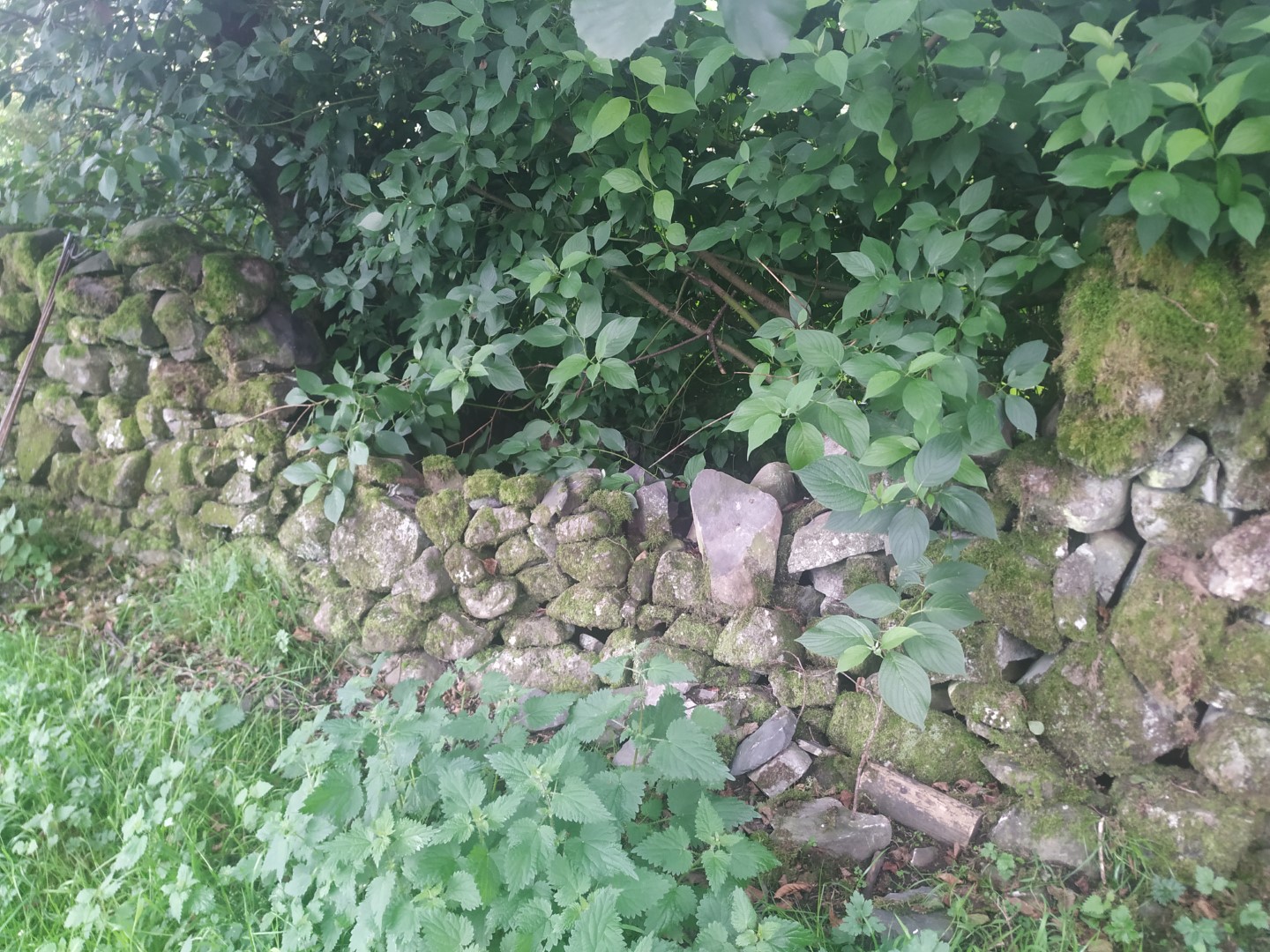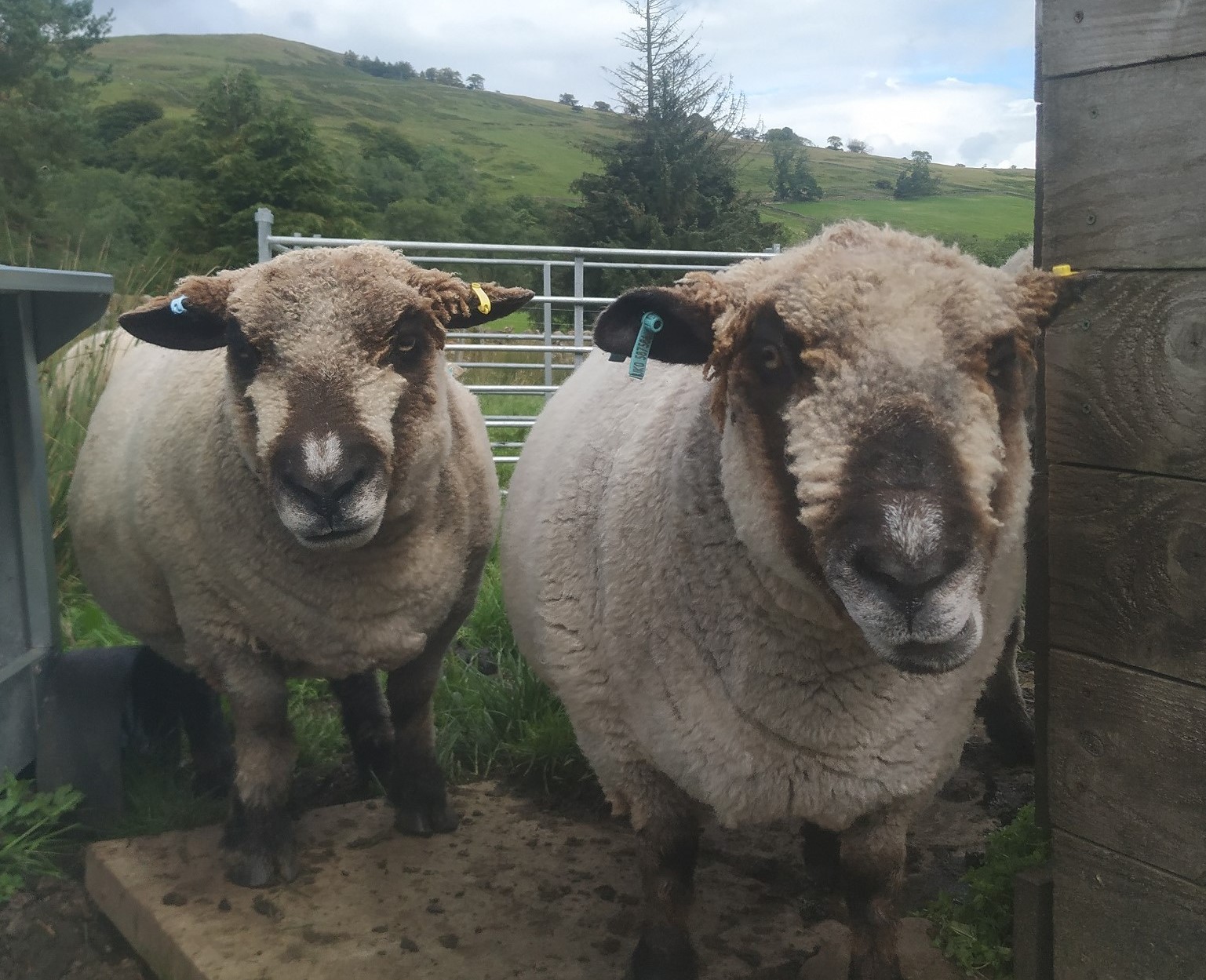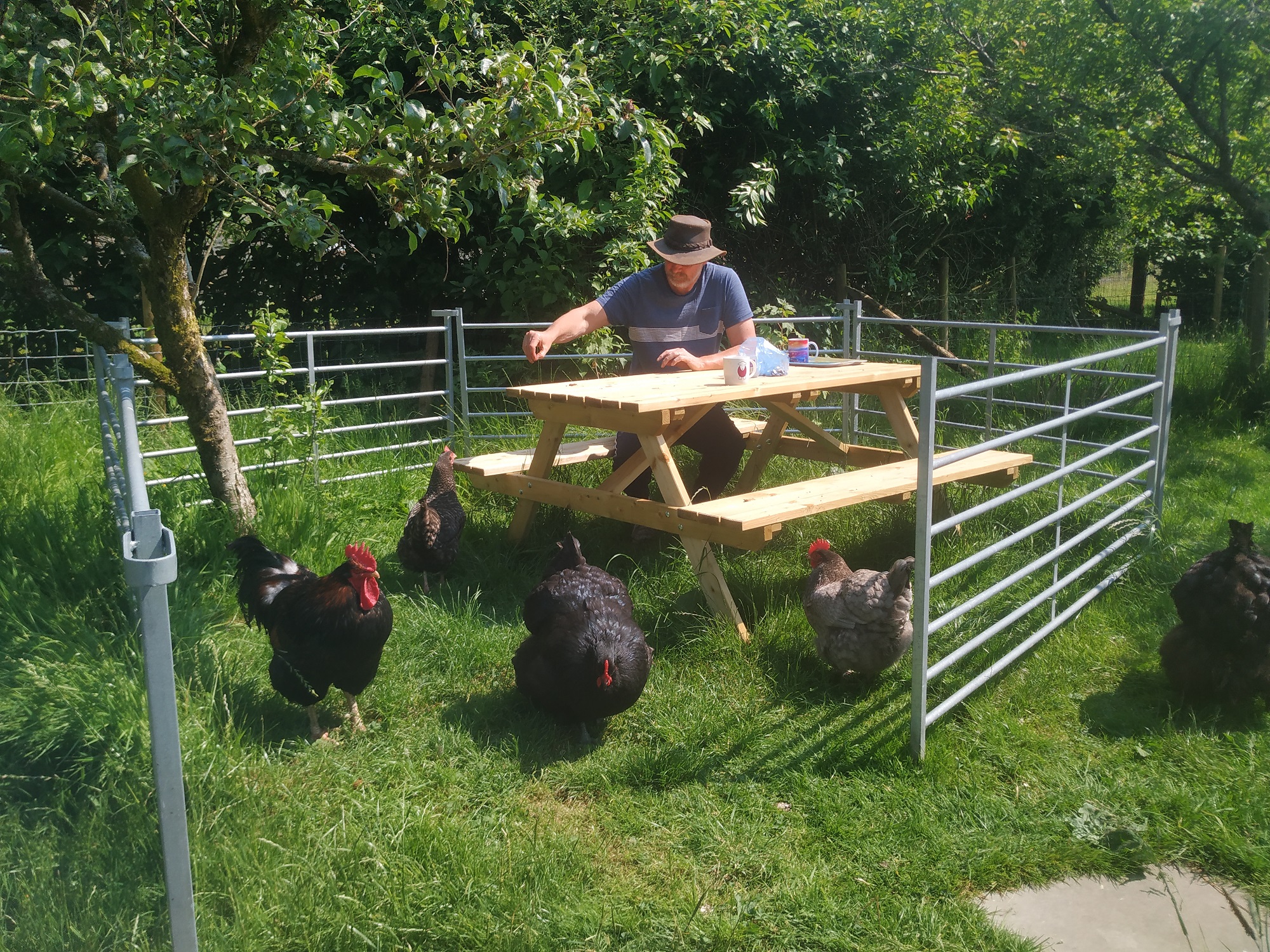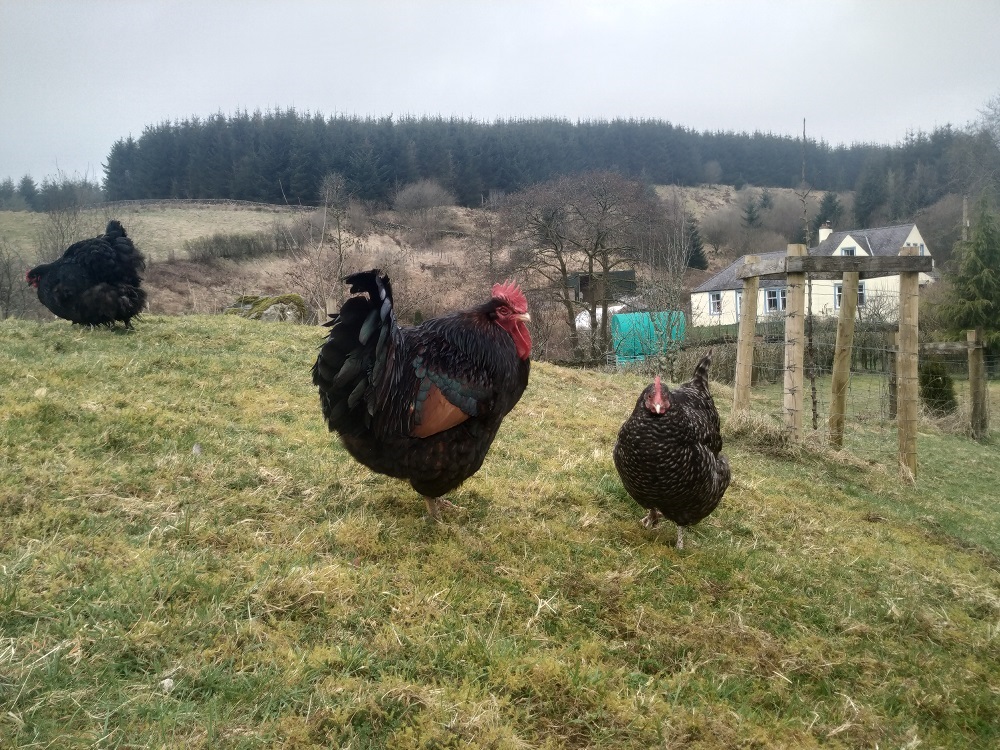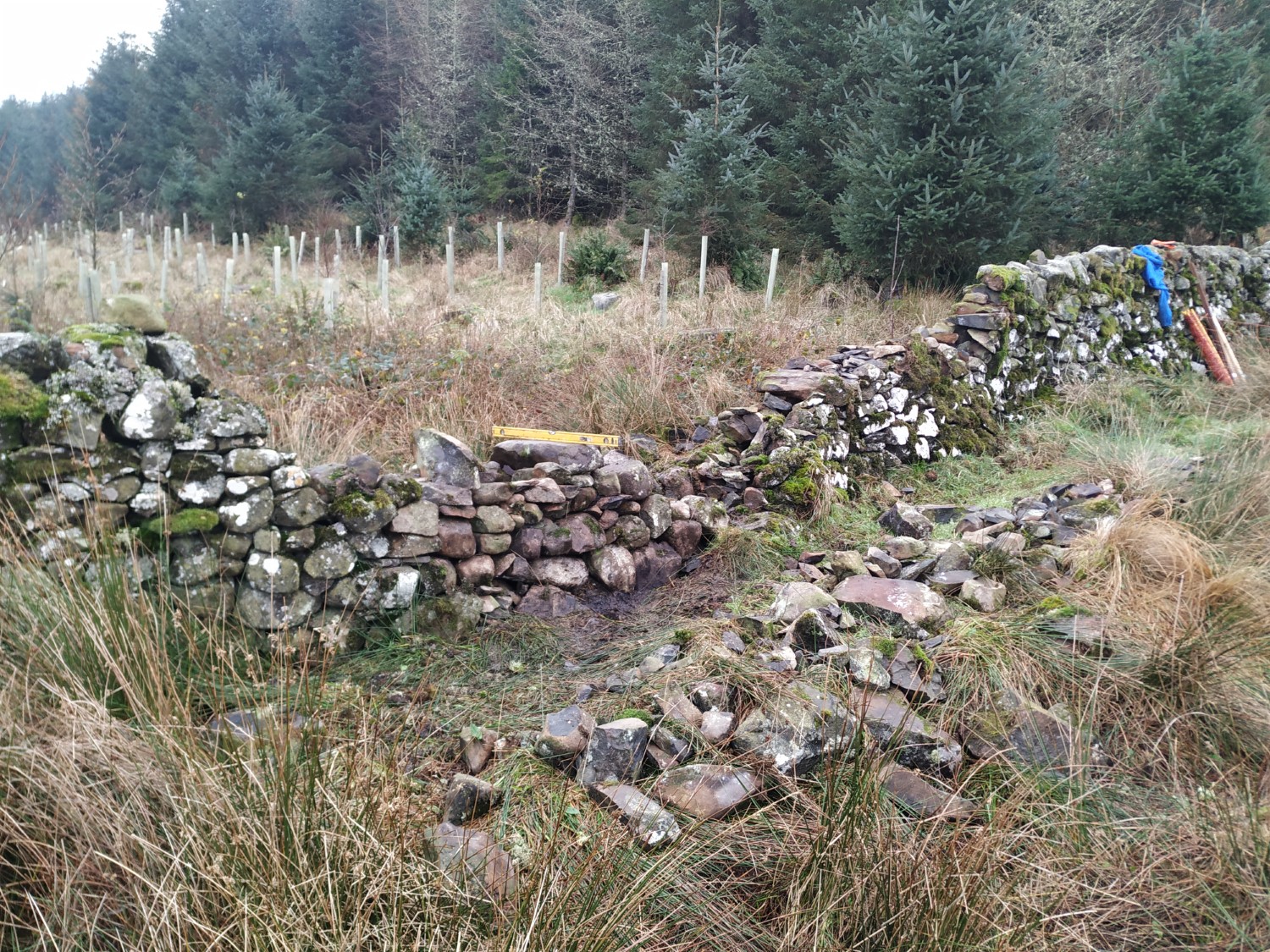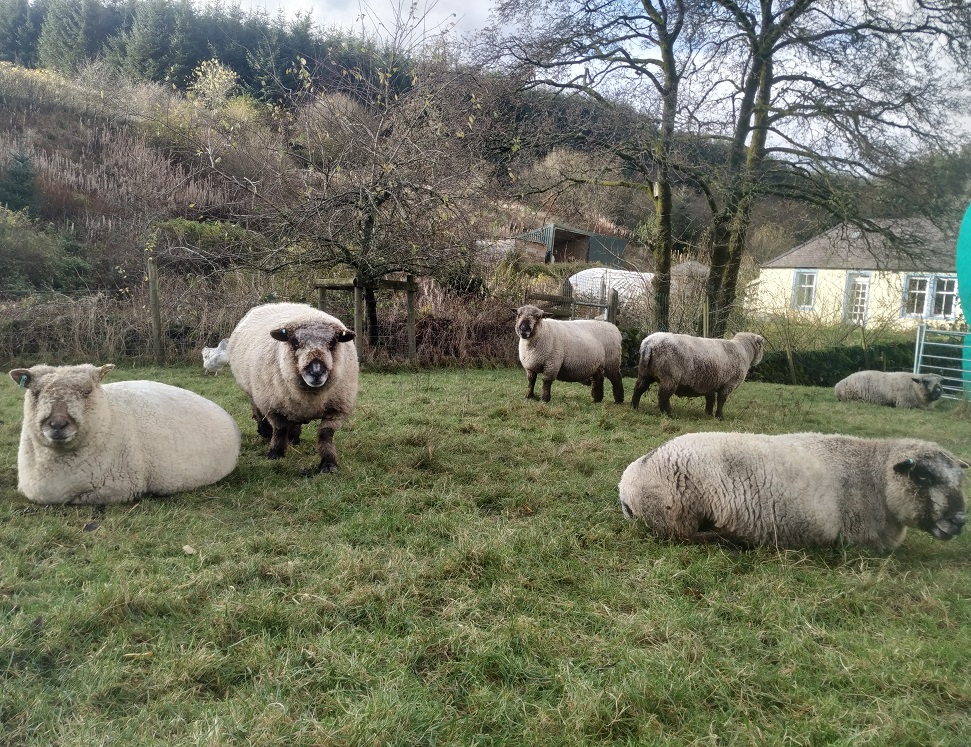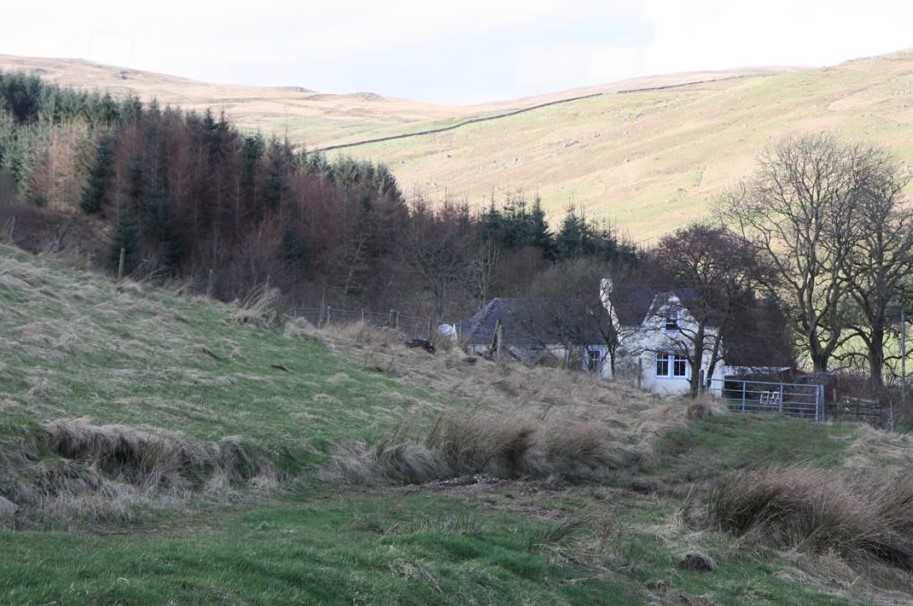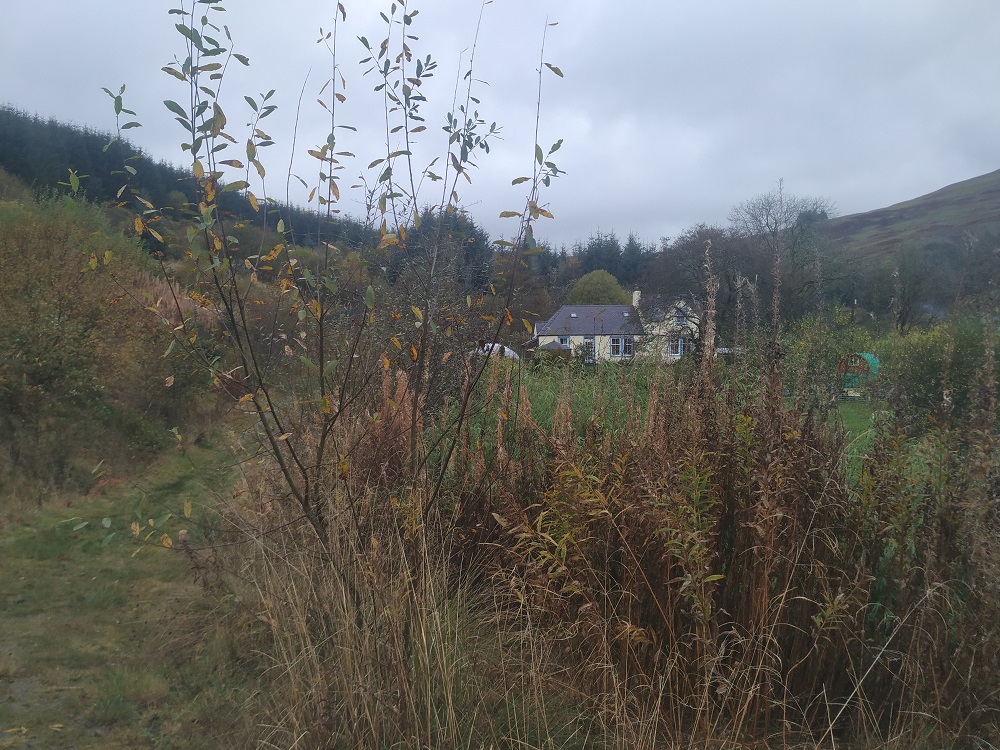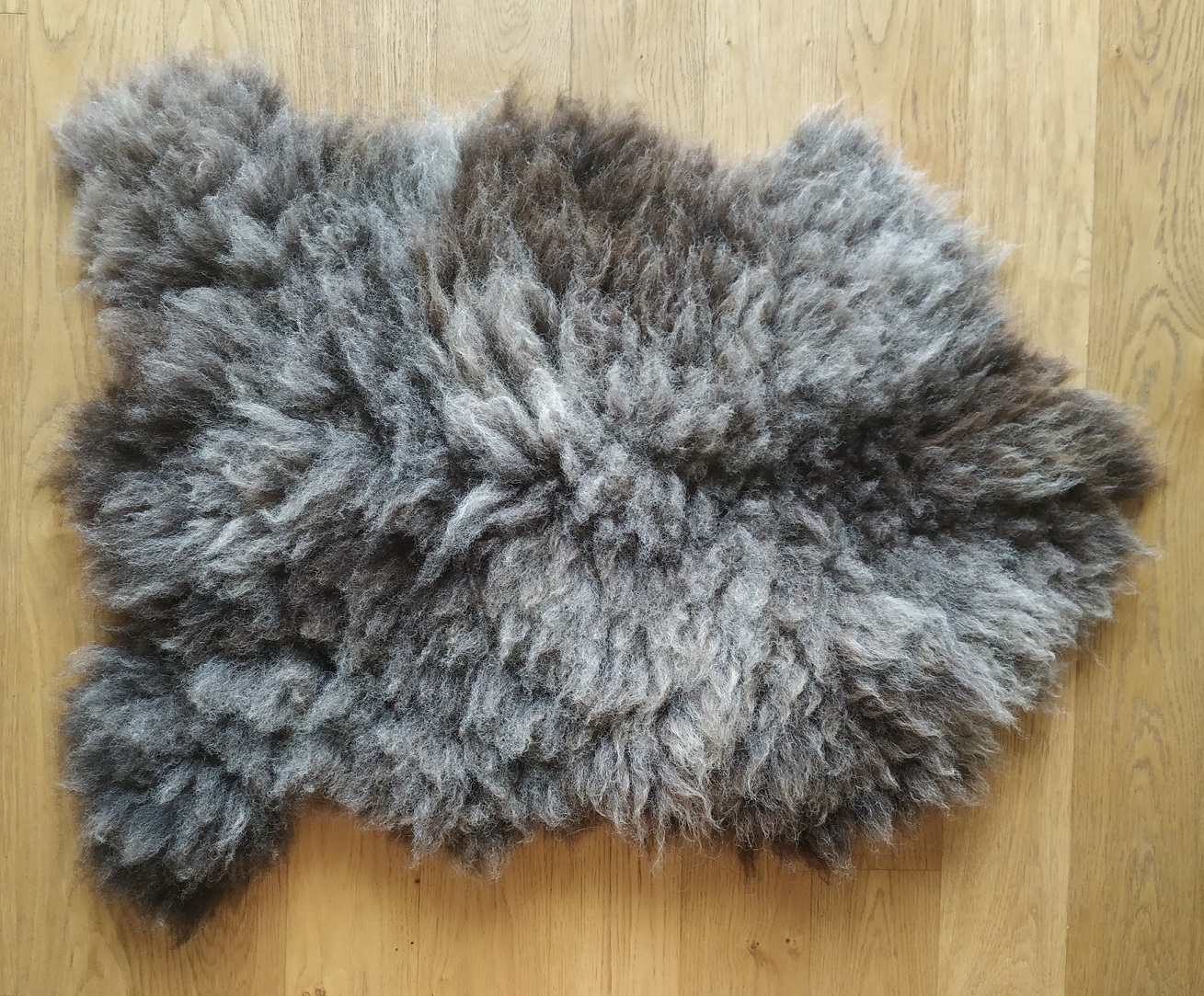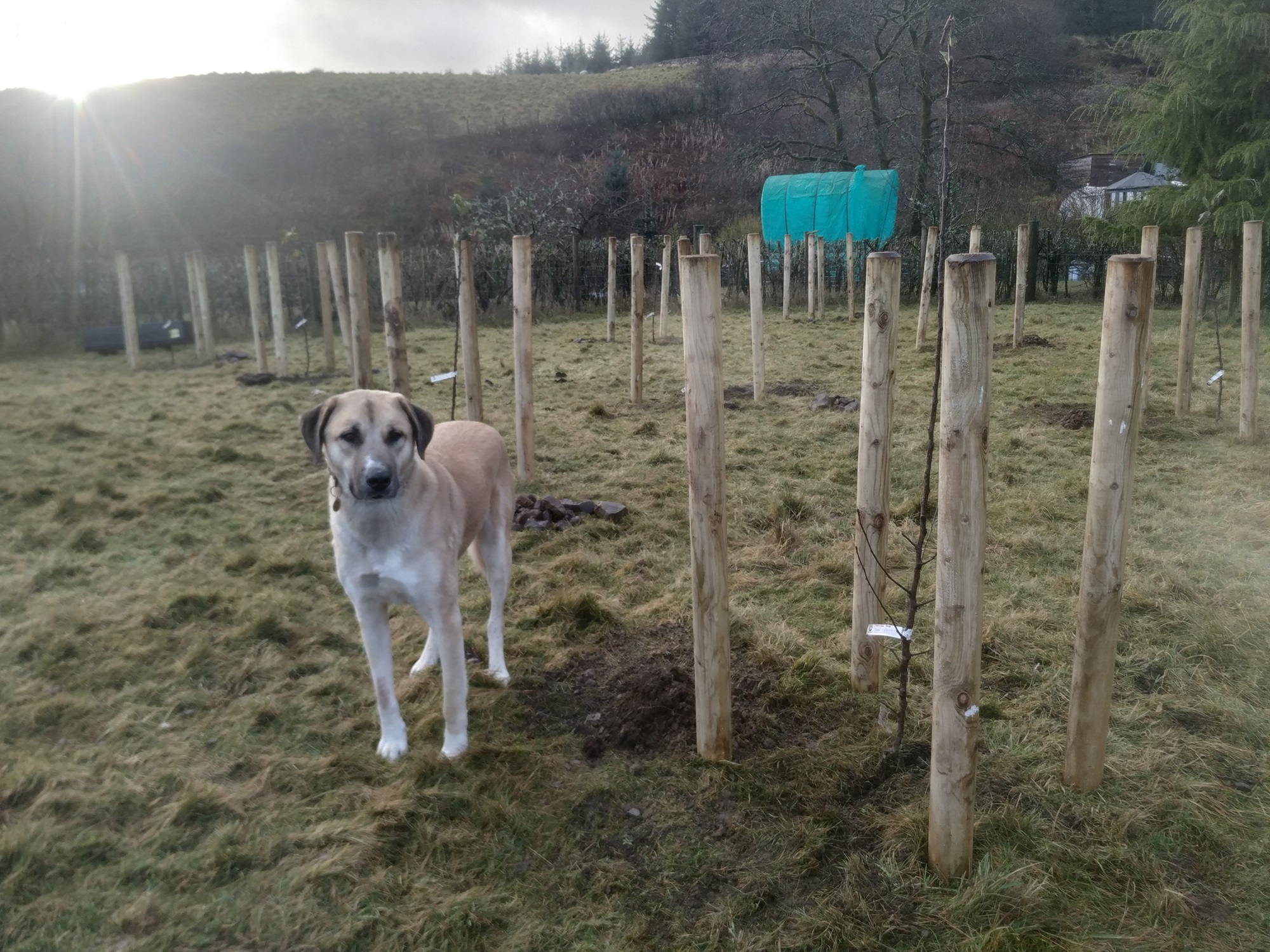

Back in the summer we decided it would be nice to plant some more apple trees. Over the last few years we’ve been gradually expanding our orchard. There were already about ten apple trees here when we moved here six years ago. Last winter we added some more, and this year we ordered another ten. We’ll have about thirty apple trees eventually which is great because Adrian and I love apples. and Adrian makes a very tasty cider!
At the beginning of November the new trees arrived through the post. Being bare rooted we heeled them into the veggie patch as a temporary home.

Fast forward a few weeks and this week was the grand tree planting ceremony. A wet week was forecast, perfect weather for planting! First we marked out where the trees would go. We carefully positioned ten bamboo canes, taking our time to make sure they were neatly spaced and looked just right. Elliot helped out by following us round and repositioning several canes. After a cup of tea we had to start all over again, this time with the dogs at a safe distance.
Next, Adrian got to work with the tree guards which entailed banging in 40 stobs with his fence post knocker-inner. It was a hard slog getting them in and we now have a large collection of rocks of all shapes and sizes for dry stone wall repairs.
The following day Adrian dug ten large holes for each of the trees. Now we have even more spare rocks for wall repairs. Then it was over to me, I filled my wheelbarrow with several bags of compost, a tub of fertiliser and of course the apple trees. Thankfully they were all alive and well, the roots looked healthy and there were plenty of worms nestled in the root-balls.


Three days later and all ten trees are in their new homes, hoorah! All we have left to do is attach some lengths of stock fence and railings to the posts to keep them safe from the sheep.
As a side note, we have a Himalayan Cedar in a corner of the orchard which the sheep took a great liking too a couple of years ago. (You can see it in the photo on the left). They’d taken several inches of bark all the way round and we thought the poor tree was doomed. In desperation we attached several bridge grafts all the way round and taped moss over the damaged trunk. Two years later and the tree has not only survived but has put on growth and is looking healthy. Even more surprising, none of the bridge grafts are alive so we are not sure how this is possible. The only thing we can think of is that we decided to leave the ‘mossy bandage’ in place (originally we were going to remove it after a few months), perhaps this is helping transport sap up the trunk?
